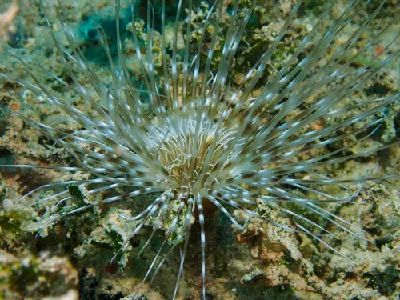Ceriantharia
Tube-dwelling anemones, also known as ceriantharians, bear a striking resemblance to sea anemones but belong to a distinct anthozoan class. These solitary creatures reside buried in soft sediments, utilizing their unique tubes for protection and withdrawal. The composition of these tubes consists of fibrous material derived from secreted mucus and ptychocysts, thread-like organelles resembling nematocysts. Notably, ceriantharians possess multiple polyps within their tubes, a characteristic that sets them apart from other tube-building species typically housing only one polyp per tube. Previously classified under Ceriantipatharia with black corals, ceriantharians have now been assigned their own class, Ceriantharia.
Presenting a crown of tentacles, ceriantharians exhibit two distinct whorls of varying sizes. The outer whorl comprises larger tentacles that extend outward, tapering to points, primarily serving for food capture and defense. In contrast, the smaller inner tentacles are more upright and serve the purpose of food manipulation and ingestion. Anactinia pelagica, among a few other species, exhibits a pelagic lifestyle, lacking attachment to the seabed. Instead, these species possess a gas chamber within their pedal disc, enabling them to float upside down near the water's surface.


